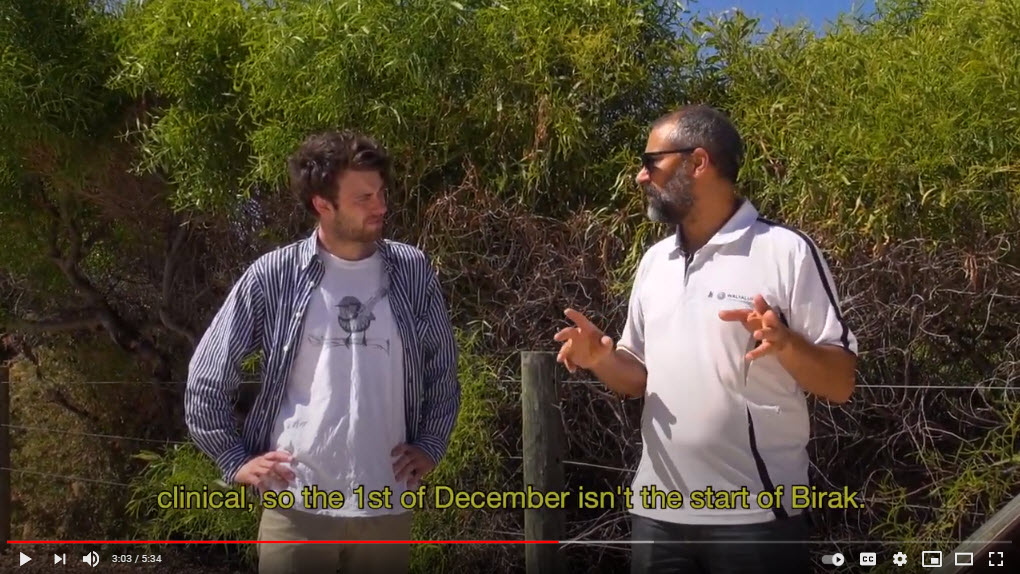Indigenous History
Fremantle Ports operates at the entrance of the Derbal Yerrigan (Swan River) in Walyalup (Fremantle) and Derbal Nara (Cockburn Sound) in Kwinana, places that have a deep significance for Noongar peoples who have walked, camped hunted and fished on the land and waters for tens of thousands of years.
The Whadjuk people are part of a larger group that have existed in the South-West of WA for more than 50,000 years, and are known by their common language: Noongar.
Walyalup is situated in Whadjuk Noongar booja – country. Walyalup is the place of the Walyo or Woylie, a small kangaroo rat that was once common in Fremantle. Walyalup/Fremantle is the country on both banks of the Derbal Yerrigan (Swan River).
Manjaree, the area around Bathers Beach, was a central meeting place where the Noongar people gathered for trade, storytelling, and ceremonies. There is a trail educates visitors about traditional practices, including bush medicine, foraging, and the spiritual narratives tied to the land. It also addresses the profound impacts of colonisation on the Noongar community.
You can learn more about Fremantle Ports reconciliation journey here.
The Story of how the Waugal fought Yondock
Story shared by Whadjuk Noongar Marmin, Steven Jacobs
Rainbow serpent Waugal was swimming down Derbal Yerrigan when one of the seagulls flying above him said “Hey Waugal the ancestral Crocodile called Yondock is coming down from the north to take over your country”.
Waugal said “I don’t like that idea and I’m going down to sort him out” and headed down the Derbal Yerrigan to Walyalup (Fremantle). Waugal stopped in a cave in North Fremantle where he met his friend Woorriji the Lizard.
Waugal said to Woorriji “I’m going to sort out this Spirit Crocodile from the north who is coming down here to take over my country”. Lizard said ”oh no don’t say you gonna do that” and Waugal became concerned and said, “how do I defeat him?”. Woorriji said “I have studied Yondock over the years. He is very strong and has a lot of teeth and all his power is in his tail. If you bite the tail off Yondock he will die.”
Waugal swam and lay beyond Wadjemup (Rottnest) when all the land was joined, and waited. Waugal could smell Yondock and looked to the Djallari (North) and saw Yondock where Gage Roads is today.
Waugal and the Spirit Crocodile began to fight and got locked in a death roll. As they rolled and tumbled, they gouged out Derbal Nara (Cockburn Sound) and all the sea waters came rushing in separating the Island from the mainland and opening the river mouth (Derbal Yerrigan) to the ocean and the sea water started mixing with the river water.
Waugal and Yondock continued their fight all the way down to Moorli borlup, (Rockingham). Waugal was losing the fight with Yondock when he remembered Lizard’s advice and bit Yondock’s tail off.
The body of the Yondock drifted off and became Garden Island. You can see at the northern end of Garden Island is all white cliffs. This is where the tail was bitten off. This is why the Garden Island is called Meeandip.
Waugal placed the tail of the Spirit Crocodile at the mouth of the Derbal Yerrigan to prevent saltwater coming up the river, protecting the freshwater environment. It became a limestone bar.
Waugal knew that if the tail and body of the Spirit Crocodile were ever re-joined, there would be serious trouble. So, he went out to North Fremantle where he met his friend Dwert – the dingo - and asked him to watch over the coast and tell him if other beings were coming down to take over his country, and Dwert agreed and stood on a hill watching over the coast. This is the site where the Dingo Flour Mill sits in North Fremantle and the Dingo still watches over the coast. This is a sign that the Dreaming is still alive and present today.


Find out how you can explore the port or get ferry and cruise info...
